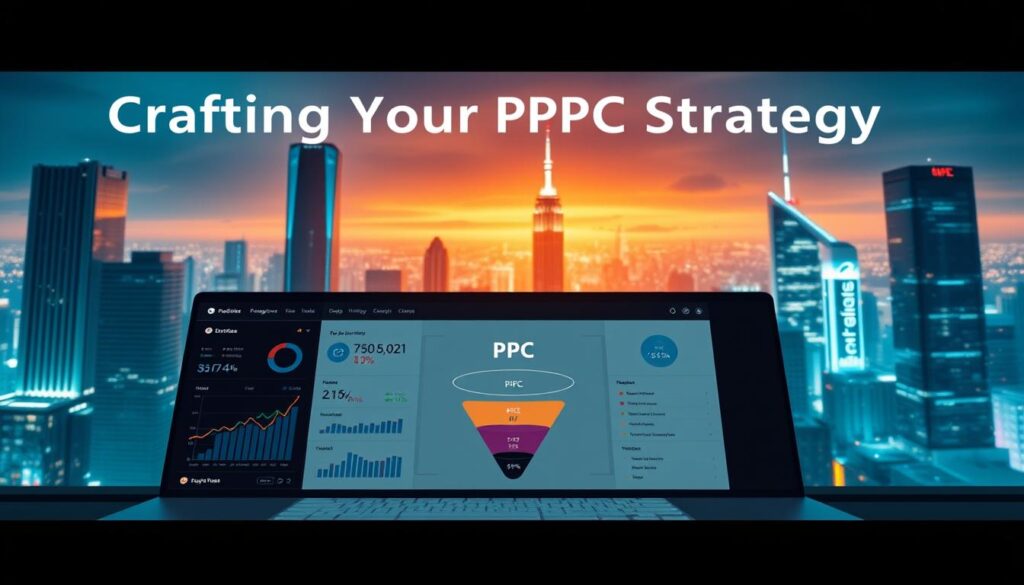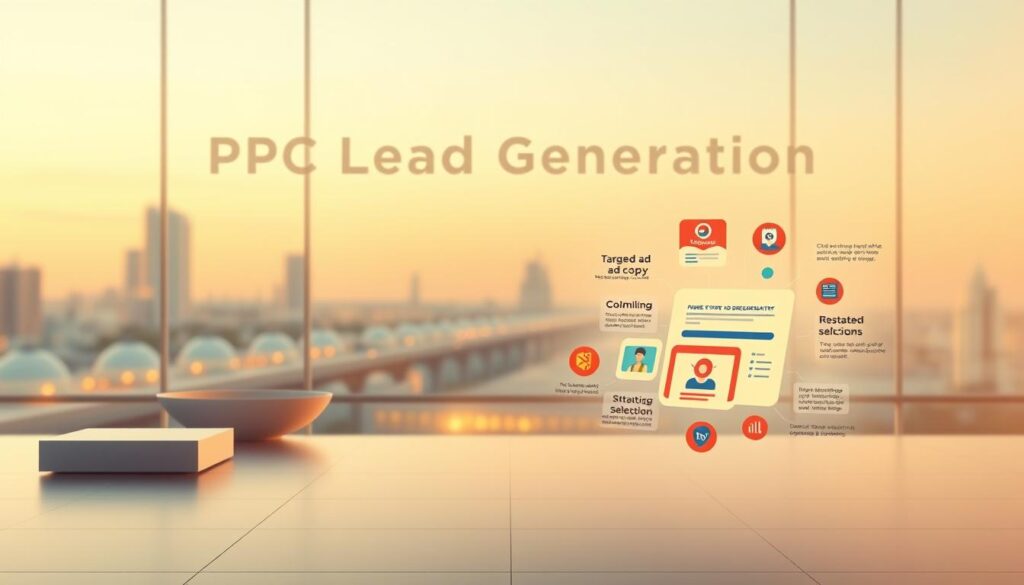Did you know that businesses leveraging paid ads for customer acquisition witness 3x faster lead growth compared to those solely relying on organic methods? Amidst a landscape where 91% of marketers prioritize lead generation (Ruler Analytics), the imperative to deliver tangible results has never been more pronounced. This is where Macro Webber: Performance Marketing That Drives Revenue® intervenes—transforming casual clicks into qualified prospects with unparalleled precision.
Envision running ads that not only attract random clicks but attract ready-to-buy audiences. Unlike the slow-burning nature of SEO tactics, paid strategies afford instant control over visibility. You dictate the budget, define the target audience, and optimize in real-time. Success, though, transcends mere ad expenditure—it hinges on intelligent targeting, conversion tracking, and the meticulous alignment of every dollar with revenue objectives.
Macro Webber’s methodology integrates meticulous data analysis with innovative ad strategies. Whether through Google Ads or social media promotions, their team crafts campaigns that resonate with decision-makers. Witness the results for yourself: clients have reported 68% higher lead quality within 90 days. Are you prepared to transition from guesswork to growth?
Key Takeaways
- 91% of marketers prioritize lead generation as a top goal
- Paid ads deliver leads 3x faster than organic methods
- Precise audience targeting maximizes ROI on ad spend
- Real-time optimization ensures campaigns stay profitable
- Conversion tracking reveals which ads drive actual sales
- Expert-led strategies improve lead quality by 68%+
Don’t allow competitors to outpace you. Engage with Macro Webber today at +91 (353) 405-7665 or hello@macrowebber.com to initiate campaigns that convert browsers into buyers.
Understanding the Basics of PPC Campaigns
PPC campaigns function akin to high-performance engines, propelling the acquisition of qualified leads with unprecedented velocity. In stark contrast to the gradual ascent of traditional marketing paradigms, PPC campaigns offer immediate visibility to a demographic actively engaged in seeking solutions. This dichotomy necessitates an examination of the mechanics underlying these paid advertisements and their indispensable role in contemporary lead generation strategies.

What is PPC Advertising?
PPC advertising, a paradigm that enables advertisers to compete for ad placements on platforms such as Google and Meta through a bidding mechanism, is distinguished by its cost-effectiveness. Advertisers only incur expenses when their advertisements are clicked, rendering it a cost-effective conduit to high-intent users. For the purpose of lead generation, this modality facilitates the display of advertisements to individuals who are actively querying for specific products or services, such as “CRM software for small businesses” or “marketing automation tools.”
Key Benefits of PPC for Lead Generation
Platforms such as Google Ads and Meta confer unique advantages for the capture of leads:
- Precise targeting: Google’s algorithms prioritize users based on their search intent, whereas Meta’s focus lies on demographic and interest-based targeting
- Measurable ROI: Enables advertisers to track the exact costs per lead and conversion rates in real-time
- Scalable budgets: Allows for the initiation of campaigns with as little as $10 per day, with the capacity to adjust based on performance
Macro Webber’s case study exemplifies these advantages in practice. Through the refinement of their PPC advertising strategies, they witnessed a 169% increase in qualified leads within a 90-day period. Their campaign’s success was predicated on the integration of Google’s intent-based advertising with Meta’s lookalike audience targeting, maximizing its reach.
How PPC Differs from Other Marketing Strategies
While SEO and social media marketing possess their own merits, PPC offers three distinct advantages for lead generation:
| Factor | PPC | SEO | Social Media |
|---|---|---|---|
| Speed | Immediate results | 3-6 month ramp-up | Variable |
| Targeting Precision | Search intent + demographics | Keyword-based | Interest-based |
| Cost Control | Set max CPC bids | Unpredictable | Algorithm-dependent |
This table elucidates the rationale behind the superiority of lead generation through PPC over organic methods. Unlike the prolonged wait for search rankings inherent in SEO, PPC enables direct engagement with prospects at the precise moment of their conversion readiness.
Crafting Your PPC Strategy
The creation of a PPC campaign that converts at a high rate necessitates meticulous planning and a strategic alignment with your business objectives. We shall dissect the three fundamental components of a successful campaign: audience targeting, keyword selection, and budget management.

Identifying Your Target Audience
Initiate by addressing these fundamental inquiries regarding your desired clientele:
- Where are they situated (city, state, or region)?
- What demographic or economic bracket do they fall into?
- Which digital platforms or applications do they habitually access?
| Factor | Key Questions | Analysis Tools |
|---|---|---|
| Geographic | Do you cater to specific locales or a broader national audience? | Google Ads Location Planner |
| Demographic | What is the average age of your audience? | Facebook Audience Insights |
| Behavioral | How frequently do they engage in online product research? | Google Analytics User Flow |
“The most effective PPC campaigns reflect the actual search behaviors of customers – not the hypothetical ones marketers think they exhibit.”
Choosing the Right Keywords
Integrate AI-driven tools with manual optimization for the selection of optimal keywords:
| Match Type | Coverage | Conversion Capability |
|---|---|---|
| Broad Match | Extensive | Minimal |
| Phrase Match | Moderate | Moderate |
| Exact Match | Narrow | Optimal |
Employ Google’s Keyword Planner to test various combinations, then scrutinize search term reports on a weekly basis to curtail unnecessary expenditure.
Setting a Realistic Budget
Adhere to these budget safety protocols for PPC efficacy:
- Initiate with 20% below your maximum allocation
- Designate 40% to the most efficacious ad groups
- Reassess bid adjustments every 72 hours
Utilize our client dashboard to monitor metrics such as Cost Per Lead (CPL) and Impression Share in real-time. For bespoke budget scaling strategies, contact our specialists at +91 (353) 405-7665 or arrange a consultation through our website.
Creating Compelling Ads for Lead Generation
The art of crafting ads that convert lies at the intersection of creativity and strategy. To successfully drive leads through PPC, it is imperative that campaigns integrate persuasive messaging, visually striking designs, and clear pathways for action. Let us dissect the critical elements that transform mere viewers into qualified prospects.

Writing Engaging Ad Copy
Your ad text must resonate by addressing pain points and presenting unique value propositions. Utilize emotional triggers such as “Tired of wasting budget on underperforming ads?” alongside credibility markers (“11 years of experience optimizing campaigns”) to create an immediate connection. Adhere to these guidelines:
- Position key benefits prominently within the first five words
- Employ action-oriented verbs like “Boost,” “Transform,” and “Secure”
- Introduce a sense of urgency with phrases like “Limited-time offer ends Friday”
Optimizations specific to each platform are critical. Meta Lead Ads, for instance, streamline the process with pre-filled forms, while LinkedIn’s single-click signups tap into the professional sphere. Always experiment with various iterations – brands have witnessed a 23% uptick in CTR when headlines incorporate numbered claims.
Designing Eye-Catching Visuals
Visual elements account for 65% of ad recall, as underscored by Google’s Demand Gen specs. Ensure your ads are optimized for mobile-first experiences with these considerations:
| Element | Best Practice | Example |
|---|---|---|
| Images | Prefer authentic individuals over stock photography | Real customers engaging with the product |
| Video | Highlight the primary benefit within the first three seconds | A before-and-after demonstration |
| Text Overlay | Should occupy no more than 20% of the screen | “Free ROI Calculator” |
Utilizing Strong Calls to Action
The efficacy of your CTA determines whether interest translates into action. Examine these exemplary scenarios:
| Platform | Weak CTA | Strong CTA |
|---|---|---|
| Google Ads | “Learn More” | “Get Your Free Consultation Today” |
| “Contact Us” | “Start Your Free Trial (No Credit Card)” | |
| Meta | “Download” | “Download Now – 2024 Marketing Kit” |
Ensure that your CTAs align with the offers on your landing pages. Incorporate micro-commitments to pre-qualify leads, such as “Answer 3 questions to receive your custom quote,” which has proven to outperform generic prompts by 18%.
Measuring and Optimizing Your PPC Campaigns
Tracking performance is the linchpin that distinguishes successful PPC campaigns from those that squander resources. At Macro Webber, our teams leverage tools such as Google Analytics, in conjunction with CallRail integration, to monitor both web form submissions and phone call conversions. This dual tracking unveils hidden opportunities within your lead generation funnel.
Analyzing Key Metrics
Metrics that directly influence ROI should be the focal point. Cost-per-lead thresholds and conversion windows dictate when to halt underperforming ads. Micro-conversions, such as brochure downloads or webinar sign-ups, serve as indicators of engaged prospects before they reach the sales-ready stage.
A/B Testing for Better Results
Simultaneous testing of ad variations is essential to evaluate the efficacy of headlines, visuals, and CTAs. Macro Webber’s AI-driven bid strategies dynamically allocate budgets to the most effective combinations. Case studies underscore the efficacy of multi-variant testing, which can elevate conversion rates by 420% when coupled with real-time adjustments.
Adjusting Your Strategy Based on Data Insights
Weekly performance reviews are imperative to prevent stagnation. Adjust bids towards high-converting keywords and pause campaigns during periods of low engagement. Tools like Google’s Search Terms Report reveal irrelevant queries that drain your budget.
Adopting these PPC optimization techniques necessitates ongoing refinement. For businesses aiming to optimize their PPC lead generation, www.macrowebber.com provides bespoke solutions that blend human expertise with machine learning. Their dashboard meticulously tracks every dollar’s impact, transforming raw data into predictable growth.



